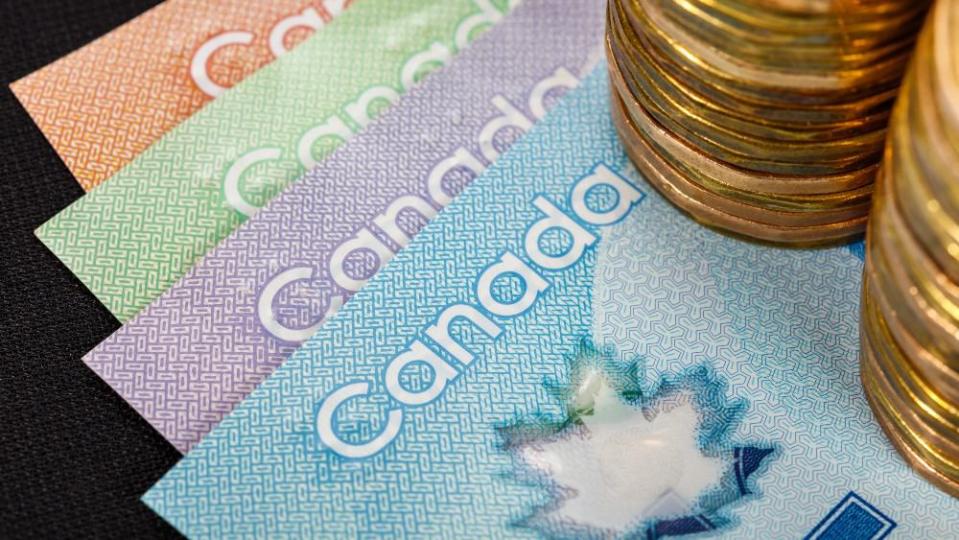How to Earn $4,987.50 Per Year in Passive Income and Share None With the CRA

Written by Andrew Walker at The Motley Fool Canada
Canadian investors are searching for ways to get better returns on their hard-earned savings without having to hand more over to the tax authorities. One popular strategy for generating tax-free passive income involves holding Guaranteed Investment Certificates (GICs) and high-yield dividend stocks inside a self-directed Tax-Free Savings Account (TFSA).
TFSA limit increase
Canada launched the TFSA in 2009 to give people a new savings option that provides more flexibility than a Registered Retirement Savings Plan (RRSP) while also giving Canadians a tax break on the income generated by the invested funds.
The TFSA limit increases every year and the size of the limit grows in $500 increments, linked to inflation. In 2024, the TFSA limit is $7,000. That’s up from the $6,500 limit in 2023. Unused contribution limits can be carried forward. The current maximum cumulative TFSA contribution space since inception is $95,000.
Money that is removed from a TFSA opens up equivalent new contribution space in the following year. All interest, dividends, and capital gains generated inside a TFSA are tax-free and can be fully reinvested or taken out as tax-free income.
Seniors don’t have to worry about TFSA income causing them to be hit by the Old Age Security (OAS) pension recovery tax that kicks in when net world income tops a minimum threshold. The Canada Revenue Agency (CRA) does not use TFSA earnings when it makes the net world income calculation for the OAS clawback. This is why it makes sense for retirees with high pension income to own income-generating investments inside a TFSA rather than in a taxable account.
Good investments for TFSA passive income
Investors who don’t want to put their savings at risk of potential losses should probably stick with GICs issued by Canada Deposit Insurance Corporation (CDIC) members. The steep rise in interest rates in Canada in the past couple of years has led to a jump in GIC rates offered by financial institutions. At the time of writing, it is easy to get a non-cashable GIC paying more than 5% for a term of one year and above 4.4% for terms up to five years.
Investors who want better yields and can handle the volatility of the stock market might consider adding top TSX dividend stocks to the mix. A number of leading Canadian dividend payers now trade at discounted prices and offer high yields.
Bank of Nova Scotia (TSX:BNS), for example, trades near $68 per share compared to $93 at the 2022 high.
Investors who buy BNS stock at the current level can get a 6.2% dividend yield.
Telus (TSX:T) is another great Canadian dividend stock that might be undervalued today. The board has increased the dividend for more than 20 consecutive years. Telus trades near $22 per share compared to more than $34 at one point in 2022. The current dividend yield is 6.75%.
The bottom line on top investments for TFSA passive income
The best mix of GICs and dividend stocks depends on a person’s risk tolerance, need for access to capital, and desired returns. An investor can quite easily build a diversified portfolio of laddered GICs and top TSX dividend stocks to get an average yield of 5.25% right now. A TFSA of $95,000 would generate an annual tax-free passive income of $4,987.50 that can go right into your pocket.
The post How to Earn $4,987.50 Per Year in Passive Income and Share None With the CRA appeared first on The Motley Fool Canada.
Should you invest $1,000 in Bank of Nova Scotia right now?
Before you buy stock in Bank of Nova Scotia, consider this:
The Motley Fool Stock Advisor Canada analyst team just identified what they believe are the 10 best stocks for investors to buy now… and Bank of Nova Scotia wasn’t one of them. The 10 stocks that made the cut could potentially produce monster returns in the coming years.
Consider MercadoLibre, which we first recommended on January 8, 2014 ... if you invested $1,000 in the “eBay of Latin America” at the time of our recommendation, you’d have $15,578.55!*
Stock Advisor Canada provides investors with an easy-to-follow blueprint for success, including guidance on building a portfolio, regular updates from analysts, and two new stock picks each month – one from Canada and one from the U.S. The Stock Advisor Canada service has outperformed the return of S&P/TSX Composite Index by 32 percentage points since 2013*.
See the 10 stocks * Returns as of 3/20/24
More reading
Can You Guess the 10 Most Popular Canadian Stocks? (If You Own Them, You Might Be Losing Out.)
How to Build a Bulletproof Monthly Passive-Income Portfolio in 2024 With Just $25,000
The Motley Fool recommends Bank Of Nova Scotia and TELUS. The Motley Fool has a disclosure policy. Fool contributor Andrew Walker owns shares of Telus.
2024

 Yahoo Finance
Yahoo Finance 